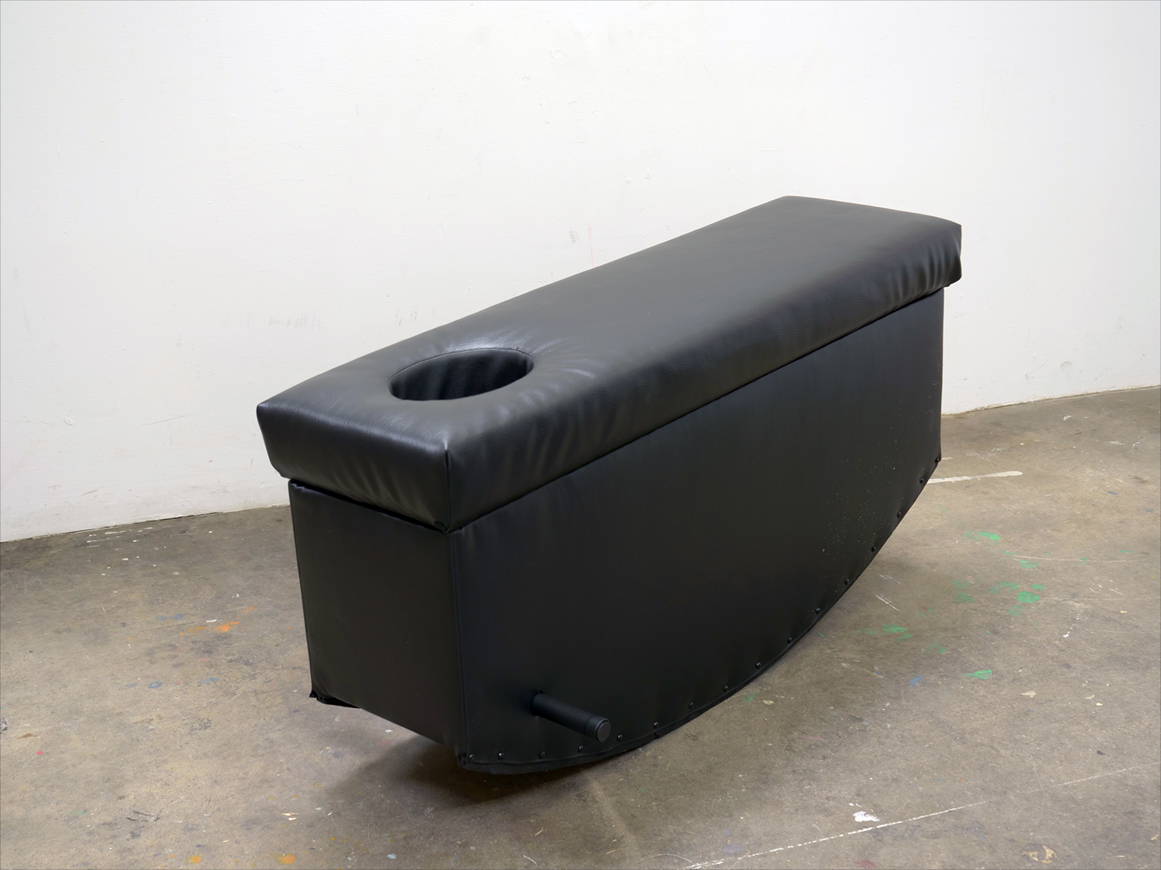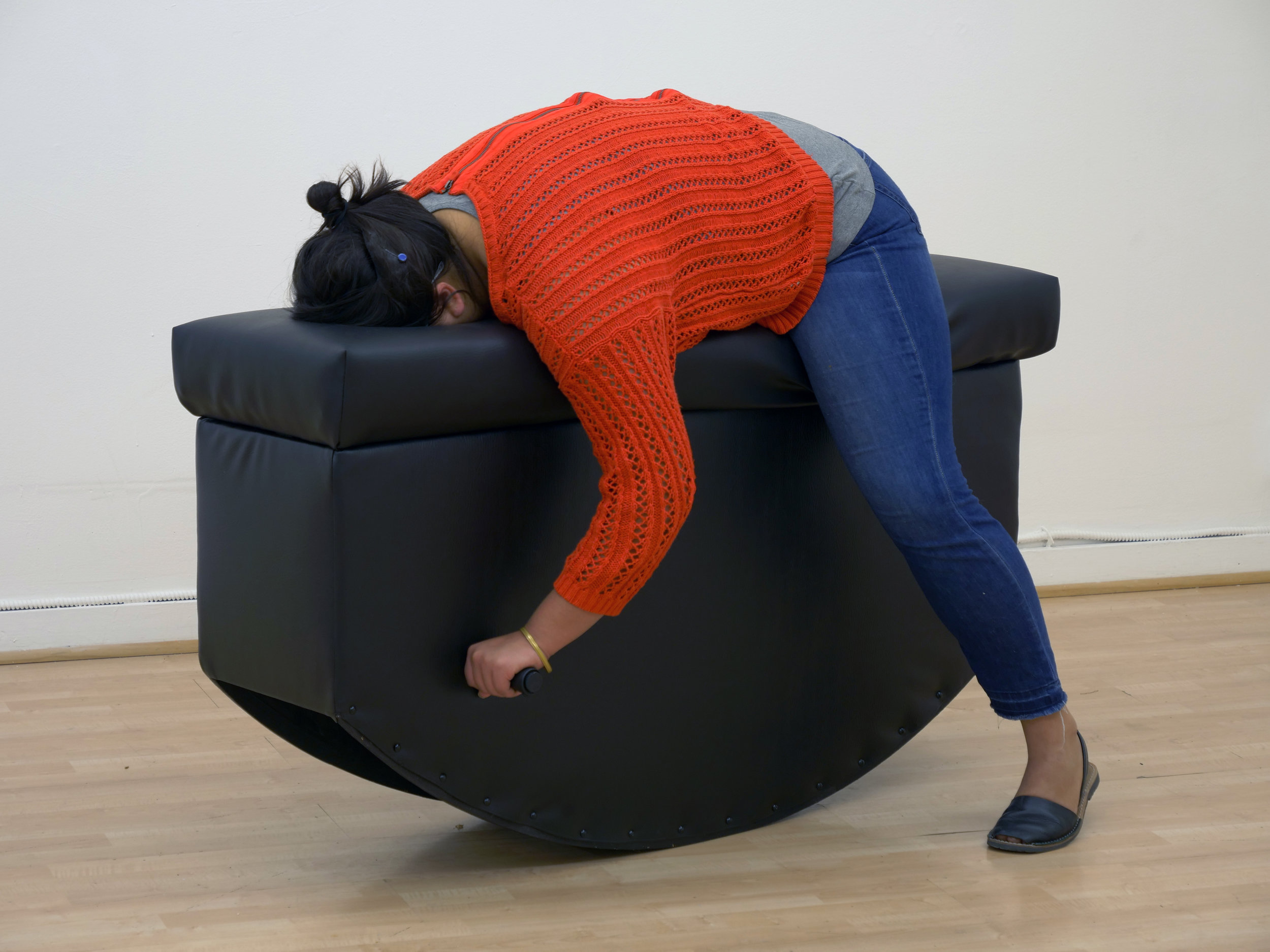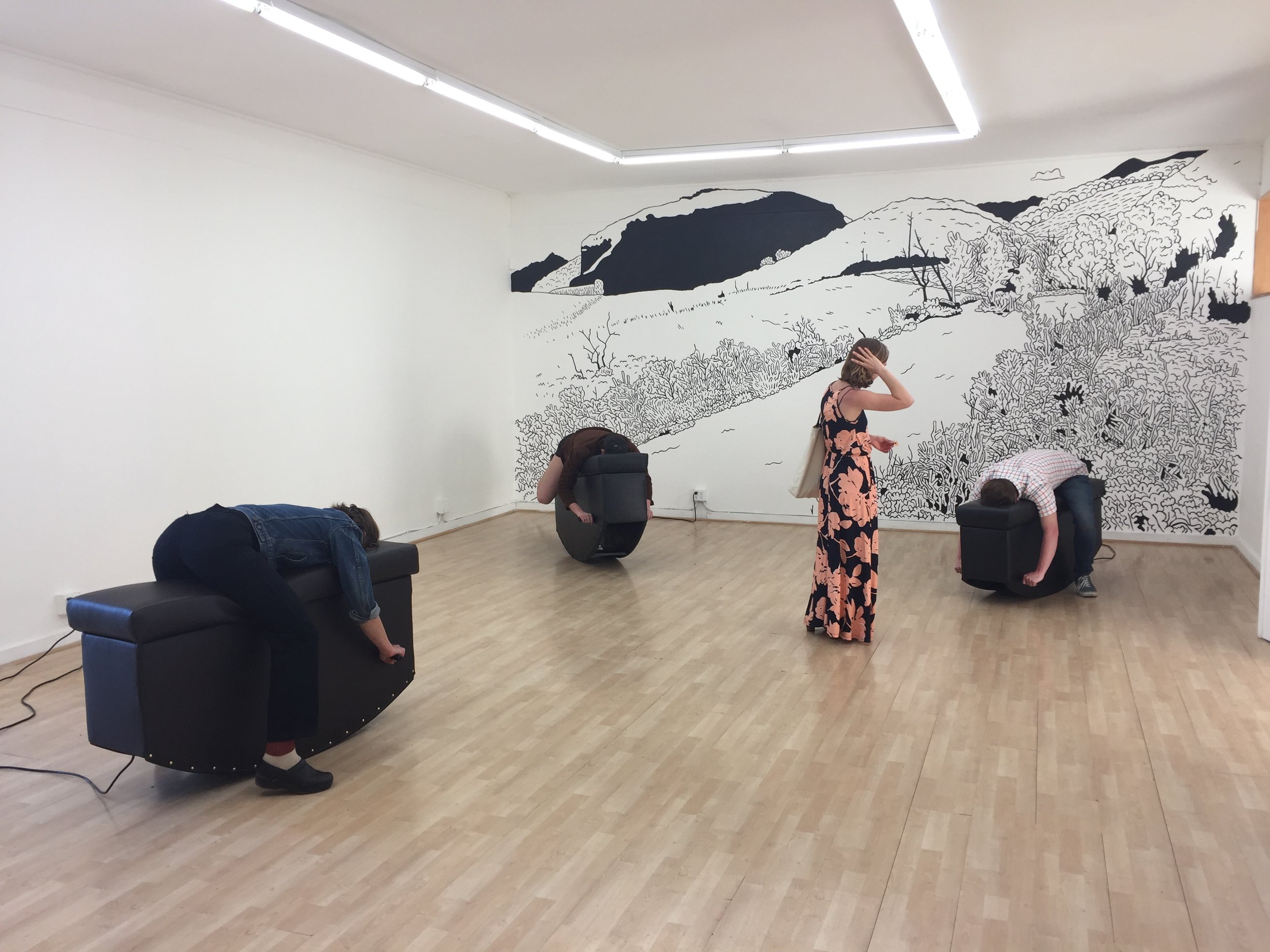Kate Rhoades: Mares of Magnesia
On view May 12 – July 1, 2018
Opening Reception: Saturday, May 12, 7–10 pm




Kate Rhoades: Mares of Magnesia
Exhibition Dates: May 12–July 1, 2018
Opening Reception: Saturday, May 12, 7–10 pm
New Gallery Location: 300 Jefferson Street, Oakland, CA 94607
Special Event: Horse Art Trivia Night with prizes! May 31, 7–9 pm
Royal NoneSuch Gallery presents Mares of Magnesia, a solo exhibition by Kate Rhoades. The exhibition includes a series of videos installed within interactive sculptures. Rhoades took inspiration for the exhibition and the sculptural forms from her re-telling of the myth of the centaurs and her consideration of queer culture.
"Back in the day, a Greek king named Ixion murdered his father-in-law. Society said, 'Whoa! That’s way out of line!' So he was left to wander without a country. Zeus felt bad for him and brought him to Mount Olympus for dinner. Sure enough, Ixion started sexually harassing Zeus’s wife Hera. Zeus manifested a cloud woman identical to Hera and sent her to Ixion to catch him being a total asshole. Once Ixion had sex with the cloud woman, Zeus said, 'Got ya! Now I’m tying you to a wheel that will spin for all eternity!' Cloud woman became pregnant with a baby, Centaurus, who was part horse, part human. The gods were disgusted and sent Centaurus down to the mortal realm. He mated with the female horses in the Greek region of Magnesia, and their progeny were the centaurs. Half man, half beast, the centaurs were said to be brash, violent, and impulsive, just like their terrible ancestor, Ixion.
Why?! Why are all the centaurs made to look this way? Like many mythical tales, the story of the centaurs served to glorify the conquering tribe and dehumanize the conquered, depicting them as subhuman beasts. The myth of the centaurs has its roots in the political conflicts that occurred in Thessaly, Greece, before the first century BCE. The Lapiths, the mythical people that drove out the centaurs, are based on an actual tribe in Thessaly, which subjugated and displaced the other tribes in the region. This vanquishing tribe perpetuated these stories, depicting the Lapiths as heroes and the tribes they conquered as literal savage animals. The centaur story is one of nationalism and conquest.
The Mares of Magnesia exhibition includes four rocking sculptures with embedded videos and a wall painting inspired by Greek landscape paintings. Audience members must mount the wooden upholstered forms, physically enacting a series of vulnerable horse-like positions. As viewers become active participants in the mythological relationship between humans, the centaurs, and their horse mothers, the mares of Magnesia, they are invited to somatically reimagine a hybrid inter-species that exists beyond the hero/monster narrative."
Kate Rhoades (b. 1985, Somerville, New Jersey), received an MFA from Mills College in 2014. Her work has been presented in the San Francisco International Film Festival and the Santa Fe International New Media Festival. Rhoades has participated in exhibitions at Trestle Gallery in Brooklyn, Southern Exposure in San Francisco, and various venues, publications, hotel rooms and alleyways across North America and Europe. Since 2014 she has co-hosted the Bay Area's number one arts and culture podcast, Congratulations Pine Tree, and in 2018 she received a Fleishhacker Foundation Eureka Fellowship .
